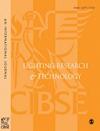社论:光的度量
IF 2.2
3区 工程技术
Q2 CONSTRUCTION & BUILDING TECHNOLOGY
引用次数: 0
摘要
最近在听晚间新闻简报时,我感到震惊的是,有多少报道可以直接与测量联系在一起,我们有多少想当然地认为我们有能力以一种有意义的、一致的和可复制的方式量化各种各样的事情。当然,我们测量的大部分内容相对简单:例如,计算患有与新冠病毒相关并发症的住院人数,或记录英国有史以来最温暖的元旦,都可以在不需要复杂的测量设备或分析的情况下完成(尽管后者确实需要对气象站温度计进行良好的校准)。但是更复杂的测量呢,比如大气中的二氧化碳含量?在这些情况下,只有通过国际合作收集和处理从各种不同传感器收集的信息,才能获得可靠和有意义的数据,所有这些传感器都必须与一套一致的测量单位相关联。随着我们越来越需要了解和量化人类活动对环境的影响,我们也越来越需要相关和可靠的测量系统。光和照明呈现出它们自身的测量挑战。随着我们对光辐射对人类健康和福祉的影响的理解的提高,以及我们更有效地利用照明消耗的能源的愿望的增加,这些问题也变得越来越复杂。不再是它足以知道可见光(即测量)的数量对于一个给定的能量传递。我们还需要考虑光线如何影响我们的睡眠-觉醒周期、我们的情绪、我们集中注意力的能力等等。我们对光辐射对人类生物学和行为的广泛影响的理解仍处于起步阶段,仍有许多需要调查。与更好的知识并行的是将研究成果转化为改进的照明产品和实践的愿望。反过来,这意味着我们需要一个测量框架,它不仅允许我们收集和分析有关“照明”的相关属性的信息,而且还可以以有意义和可理解的方式交流和量化这些属性。任何这种测量系统还必须符合国际单位制,这对于实现可追溯的测量和建立国际标准和准则至关重要。我希望所有参与这一重要研究领域的人将继续牢记对相关和可靠测量系统的最终需求,并继续合作以实现这一目标。引用开尔文勋爵的话:“当你可以测量你谈到,在数字和表达它,你知道关于它的一些情况,你不能用数字将它表达出来时,你的了解就是贫乏的,不能令人满意;它可能是知识的开端,但很少,你的思想,先进科学的阶段。”本文章由计算机程序翻译,如有差异,请以英文原文为准。
Editorial: The measure of light
Listening to the evening news bulletin recently, I was struck how much of the reporting could be directly linked to measurement, and how much we take for granted our ability to quantify all manner of things in a meaningful, consistent and reproducible manner. Of course, much of what we measure is relatively straightforward: counting the number of people in hospital with Covidrelated complications, or recording the warmest New Year’s Day ever in the UK, for example, can both be done without the need for complicated measurement equipment or analysis (although the latter does require good calibration of weather station thermometers). But what about more complex measurements, such as the amount of CO2 in the atmosphere? Reliable and meaningful data in these cases are only possible as a result of international collaborations to collect and process information gathered from a wide range of different sensors, all of which must be linked to a consistent set of measurement units. As our need to understand and quantify the impact of human activity on the environment increases, so too does our need for relevant and reliable systems of measurement. Light and lighting present their own measurement challenges. Those, too, are becoming more complex as our understanding of the impact of optical radiation on human health and wellbeing improves, and our desire to use the energy consumed by lighting more effectively increases. No longer is it enough to know (i.e. measure) the amount of visible light delivered for a given amount of energy. We also need to consider how that light might affect our sleep-wake cycle, our mood, our ability to concentrate and so on. Our understanding of the wide-reaching impact of optical radiation on human biology and behaviour is still in its infancy and there is much that still needs to be investigated. In parallel with better knowledge comes a desire to translate research findings into improved lighting products and practice. And that in turn means we need a measurement framework that not only allows us to collect and analyse information about the relevant properties of “lighting”, but also to communicate and quantify those properties in a meaningful and understandable way. Any such measurement system must also be compliant with the International System of Units (SI), which is essential to enable traceable measurements and the establishment of international standards and guidelines. I hope all those involved in this important area of research will continue to keep the ultimate need for a relevant and reliable measurement system in mind and continue their collaborations to achieve this goal. To quote Lord Kelvin: “When you can measure what you are speaking about, and express it in numbers, you know something about it, when you cannot express it in numbers, your knowledge is of a meagre and unsatisfactory kind; it may be the beginning of knowledge, but you have scarcely, in your thoughts, advanced to the stage of science.”
求助全文
通过发布文献求助,成功后即可免费获取论文全文。
去求助
来源期刊

Lighting Research & Technology
工程技术-光学
CiteScore
5.40
自引率
16.00%
发文量
69
审稿时长
>12 weeks
期刊介绍:
Lighting Research & Technology (LR&T) publishes original peer-reviewed research on all aspects of light and lighting and is published in association with The Society of Light and Lighting. LR&T covers the human response to light, the science of light generation, light control and measurement plus lighting design for both interior and exterior environments, as well as daylighting, energy efficiency and sustainability
 求助内容:
求助内容: 应助结果提醒方式:
应助结果提醒方式:


